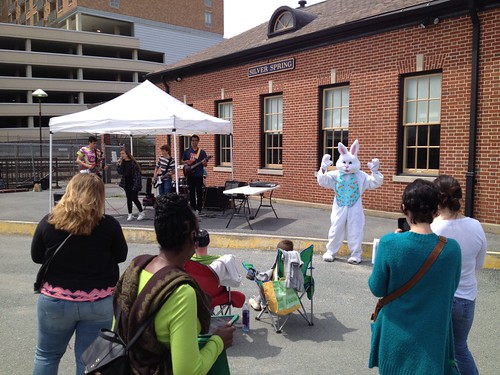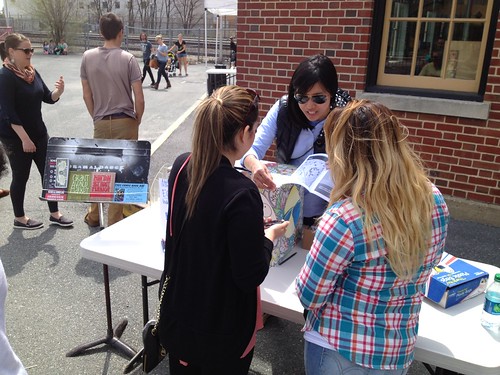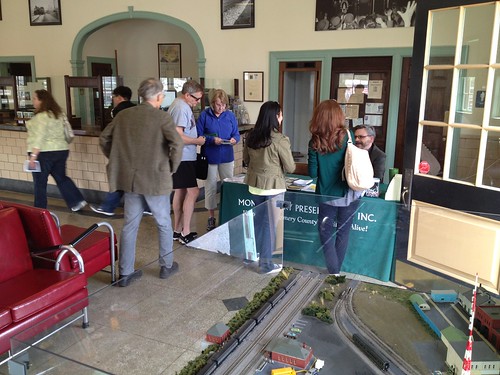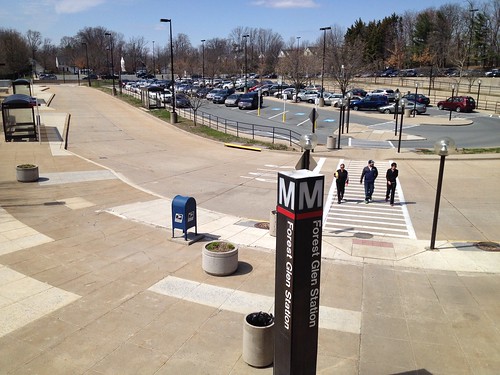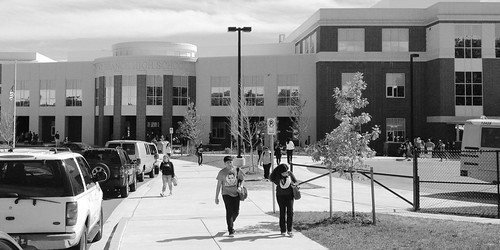Several hundred students, teachers and school administrators, parents, and local officials marched on Rockville yesterday in a call to close the growing achievement gap between white and Asian and black and Hispanic students in Montgomery County Public Schools.
The Minority Scholars Program, a student-driven initiative to close the achievement gap, began organizing the march several months ago. The group began at Walter Johnson High School in Bethesda eight years ago as a way to reach out to minority students, and has since expanded to 10 other high schools in the county, including Northwood, Springbrook, and Wheaton. Organizers say the program has “data to support its success” in increasing the academic eligibility and honor roll placement of minority students.
About 400 people marched from the Carver Center, once the county’s black high school under segregation and now the MCPS central office, down Rockville Pike and North Washington Street. Students chanted and held signs with slogans like “Close the Gap,” as drivers honked their horns in approval. The march ended at Courthouse Square for a festive rally on the steps of the county courthouse with music and dancing.
Organizers hope the march will raise awareness about the achievement gap and spur the community to action. “For years, we have been watching and waiting and hoping and wishing for something to change,” said Mike Williams, a teacher at Walter Johnson who helped start the Minority Scholars Program.
Several MCPS and Montgomery County officials participated in the march and subsequent rally, including school board president Phil Kauffman and superintendent Joshua Starr, who tweeted selfies with the crowd and even briefly danced with MSP members on stage. “We care about you and we love you,” he said. “Everything we are doing is about how we can work harder to close the gap.”
Speakers during the rally made repeated comparisons to other youth movements in history, from the East Los Angeles Walkouts in 1968 to the 1976 Soweto uprising in South Africa. Tim Warner, Chief Engagement and Partnership Officer for MCPS, urged the students to offer their input and ideas. “You are the solution…you are what Montgomery County looks like today and you are our leaders,” he said. “You all need to tell us what to do.”
Student leader Gabi Bianchi called the march “the beginning of a revolution to close the achievement gap,” adding, “We have been heard.” She said the Minority Scholars Program will advocate for “institutional changes” at the federal, state, and county levels to give students and schools the resources they need to succeed.
That will be a challenge for the organization. School officials acknowledge that minority students are lagging their peers, and MCPS does have many good programs in place to help close the gap. But the achievement gap continues to grow and appears to be a direct result of de facto racial and socioeconomic segregation in MCPS.
Yet in recent months, Dr. Starr has both rejected a recent report from the county’s Office of Legislative Oversight about the achievement gap, while Starr and Kauffman both threatened to cut funding for additional programs to close the gap if the school system didn’t get a raise in their budget from the county. These actions really raise questions about the school system's commitment.
Yesterday’s march was a great day for the Minority Scholars Project and for all of the hard-working students and staff who made it happen. But we all have to hold MCPS leaders accountable for their promises to listen to the community's concerns and make the school system more equitable for all students.
Check out this slideshow of the march.
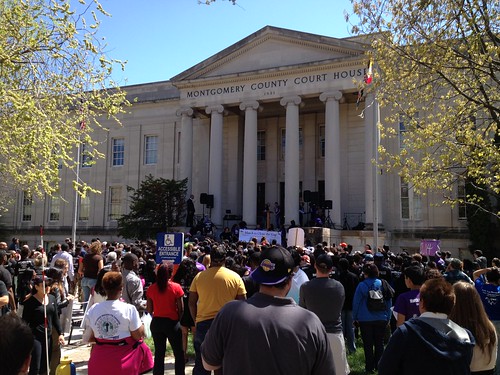 |
| Several hundred people came to march in protest of the achievement gap in Rockville yesterday. |
The Minority Scholars Program, a student-driven initiative to close the achievement gap, began organizing the march several months ago. The group began at Walter Johnson High School in Bethesda eight years ago as a way to reach out to minority students, and has since expanded to 10 other high schools in the county, including Northwood, Springbrook, and Wheaton. Organizers say the program has “data to support its success” in increasing the academic eligibility and honor roll placement of minority students.
About 400 people marched from the Carver Center, once the county’s black high school under segregation and now the MCPS central office, down Rockville Pike and North Washington Street. Students chanted and held signs with slogans like “Close the Gap,” as drivers honked their horns in approval. The march ended at Courthouse Square for a festive rally on the steps of the county courthouse with music and dancing.
Organizers hope the march will raise awareness about the achievement gap and spur the community to action. “For years, we have been watching and waiting and hoping and wishing for something to change,” said Mike Williams, a teacher at Walter Johnson who helped start the Minority Scholars Program.
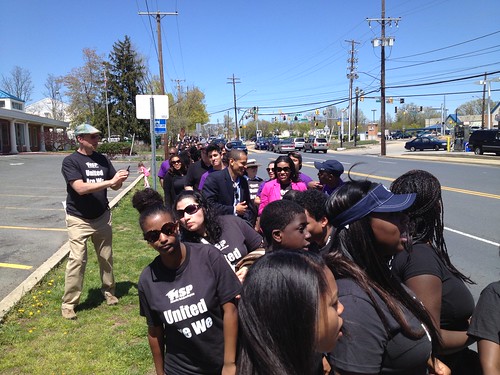 |
| Marchers on Rockville Pike as Dr. Starr (left) takes a photo. |
Several MCPS and Montgomery County officials participated in the march and subsequent rally, including school board president Phil Kauffman and superintendent Joshua Starr, who tweeted selfies with the crowd and even briefly danced with MSP members on stage. “We care about you and we love you,” he said. “Everything we are doing is about how we can work harder to close the gap.”
Speakers during the rally made repeated comparisons to other youth movements in history, from the East Los Angeles Walkouts in 1968 to the 1976 Soweto uprising in South Africa. Tim Warner, Chief Engagement and Partnership Officer for MCPS, urged the students to offer their input and ideas. “You are the solution…you are what Montgomery County looks like today and you are our leaders,” he said. “You all need to tell us what to do.”
Student leader Gabi Bianchi called the march “the beginning of a revolution to close the achievement gap,” adding, “We have been heard.” She said the Minority Scholars Program will advocate for “institutional changes” at the federal, state, and county levels to give students and schools the resources they need to succeed.
That will be a challenge for the organization. School officials acknowledge that minority students are lagging their peers, and MCPS does have many good programs in place to help close the gap. But the achievement gap continues to grow and appears to be a direct result of de facto racial and socioeconomic segregation in MCPS.
Yet in recent months, Dr. Starr has both rejected a recent report from the county’s Office of Legislative Oversight about the achievement gap, while Starr and Kauffman both threatened to cut funding for additional programs to close the gap if the school system didn’t get a raise in their budget from the county. These actions really raise questions about the school system's commitment.
Yesterday’s march was a great day for the Minority Scholars Project and for all of the hard-working students and staff who made it happen. But we all have to hold MCPS leaders accountable for their promises to listen to the community's concerns and make the school system more equitable for all students.
Check out this slideshow of the march.




